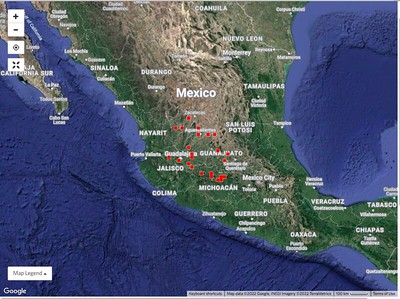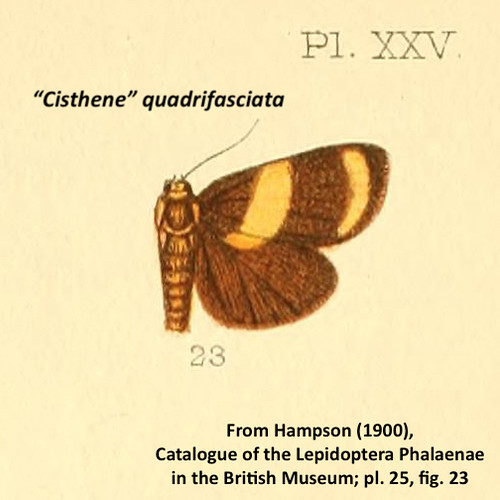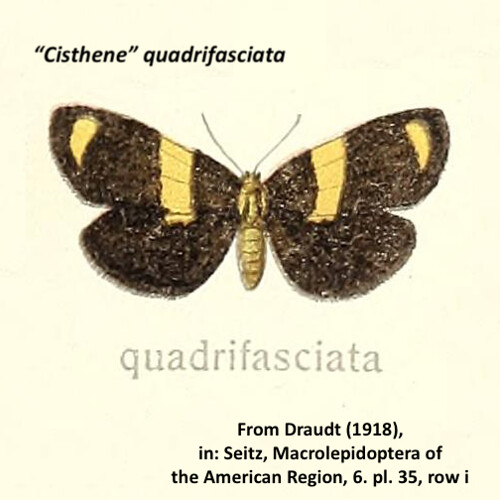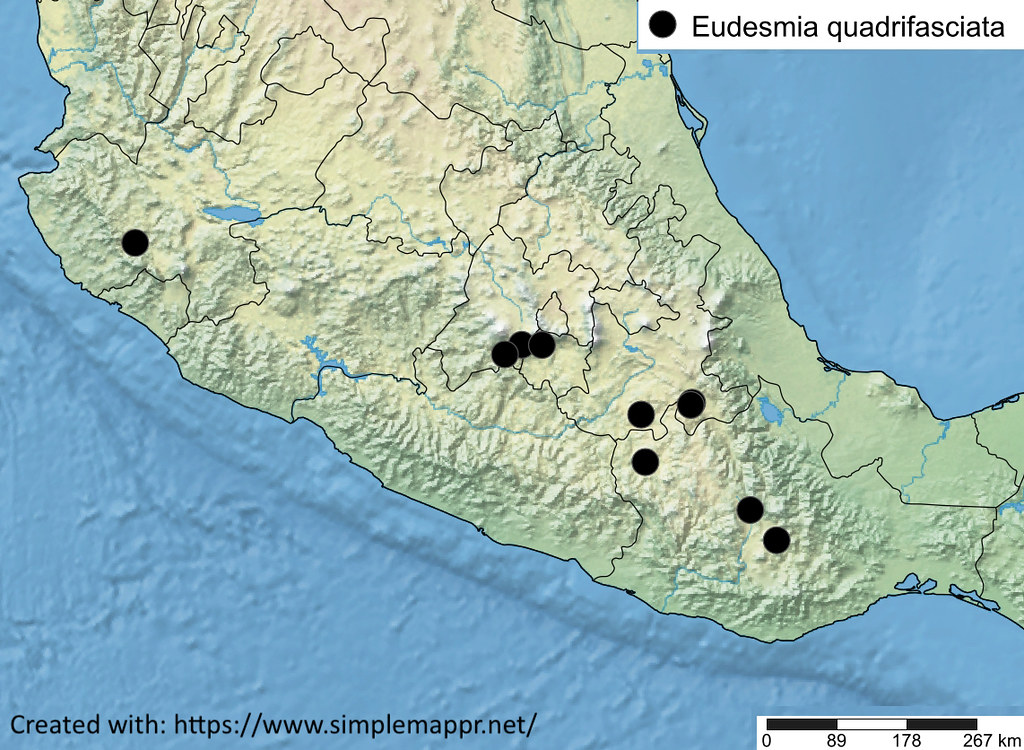Eudesmia cypris: A distinctive lichen moth from central Mexico
Resumen (español): Entre las varias especies del género de líquenes Eudesmia descritas en México, E. cypris se reconoce fácilmente por su tórax negro. Por lo demás, es muy similar a E. arida. Ocurre en las tierras altas del centro de México en los estados de Aguascalientes, Guanajuato, Jalisco, Michoacán y el sur de Zacatecas.



Eudesmia cypris (L to R): Agauscalientes, @leptonia | Michoacán, @minerva31 | Michoacán, @elrayman210
In my continuing review of the literature on the lichen moth genus Eudesmia, I have tried to carefully read the original descriptions, compare those to the earliest published drawings of the species (often from the type specimens), and then compare these to the array of modern images available on iNaturalist and other repositories. This is very challenging for the populations of this genus in Mexico. There are no less than 11 species names that have been applied to various Eudesmia populations in Mexico. Many of these are likely to be synonyms because of the variation in color and patterns that wasn’t appreciated by researchers in the 19th Century (see my journal entry on this topic). However, a few of the named species have distinctive enough characters to be recognizable in modern images.
One such species is Eudesmia cypris (Druce, 1894) (originally described in the genus Ruscino; see below). Druce described the species from a specimen from Lake Chapala, Jalisco, Mexico. This is a blackish moth with the standard Eudesmia orange-yellow median band across the forewings, a subterminal arc of the same color, and with the basal part of the hindwings also orange-yellow. Druce described the median orange-yellow band as “wide”, but his illustration in volume 3 of the moth volumes of Godman & Salvin’s Biologia Centrali-Americana (plate 78, figure 5; see below) shows a Eudesmia with a rather narrow median band compared to the variation seen in various other populations and species. The margins of this median band are fairly straight.
The subterminal orange arc is much like that in Eudesmia arida in that it does not quite reach the costal margin of the forewing. Most importantly, however, Druce further described the species as having the “head, antennae, thorax, abdomen, and legs black; collar and tegulae orange-yellow.” The black thorax and abdomen are evident in the aforementioned image in the Biologia and these are distinct from all other populations of Eudesmia in Mexico. The next nearest species with black on the thorax are the distinctive Eudesmia unicincta and Eudesmia lunaris of Colombia and Venezuela. Populations of other named Eudesmia species all around E. cypris have an entirely orange-yellow head, thorax, and abdomen.
As I reviewed observations on iNaturalist, I encountered a distinct set of images in the highlands of central Mexico with the diagnostic black center of the thorax, surrounded by the orange collar and tegulae as described by Druce. They occur in a geographically unified region in the interior of Mexico in the states of Aguascaliente, Guanajuato, Jalisco, Michoacán, and Zacatecas (see screen capture from iNat, below). I conclude that these all represent Eudesmia cypris. The species appears to be confined mainly to the western portion of the Trans-Mexican Volcanic Belt (TMVB)(see map below) and nearby highlands of the Sierra Madre Occidental to near Zacatecas (city). There are no images yet of the species on the Pacific coastal slope of west Mexico and none south of the TMVB.

Map of Eudesmia cypris observations, as of 7 December 2022. For another version of a range map of Eudesmia cypris, see my journal entry on testing SimpleMappr.
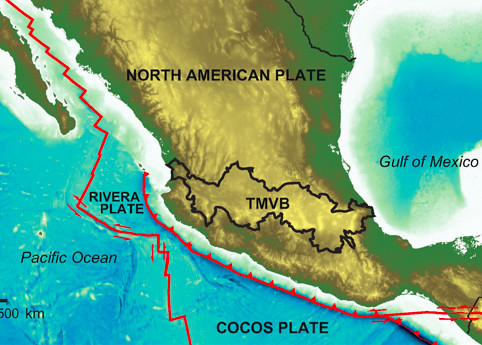
Trans-Mexican Volcanic Belt (TMVB). Adapted from Pérez-Moreno et al. 2021. Appl. Sci. 2021, 11(13), 6126. Open Access, downloaded from mdpi.com.
Thus far this range seems to be allopatric with (i.e., completely separate from that of) Eudesmia arida which occurs south to northern Zacatecas in the west and across the arid Mexican plateau to Nuevo Leon, San Luis Potosi, and Hidalgo. I haven’t found any other obvious field marks for separating cypris and arida in images of living moths except for the black thorax (which is all orange in arida). It is conceivable that cypris is just a regional color morph of arida (in which case, “Eudesmia cypris (Druce, 1894)" would have name priority over “Eudesmia arida (Skinner, 1906)”), but that must await proper phylogenetic studies with genitalic examination and DNA analysis.
References
Druce, H. 1894. Descriptions of some new species of Heterocera from Central America. Ann. Mag. Nat. Hist. (6)13:168-182.
Druce, H., 1881-1900. Biologia Centrali-Americana. Insecta. Lepidoptera-Heterocera, Vol. I., Vol. II (1891-1900), Vol. III (Plates; 1891-1900). Edited by F. D. Godman and O. Salvin. Links to BHL: Description of Ruscino cypris in Vol. II; link to plate 78 in Vol. III.
Skinner, H. 1906. New butterflies and moths with notes on some species. Entomol. News 17(3):95-96.




